Bus Tour of Rome
Back to Italy 2016 Index
Colosseum
Rome - Around the City
Rome at Night
Vatican and St. Peter's
A great way to get the lay of the land and to see a lot in a short time is
to take the hop on/off tour bus. You can spend the day driving around
Rome and get off at places of interest and explore them a bit more.
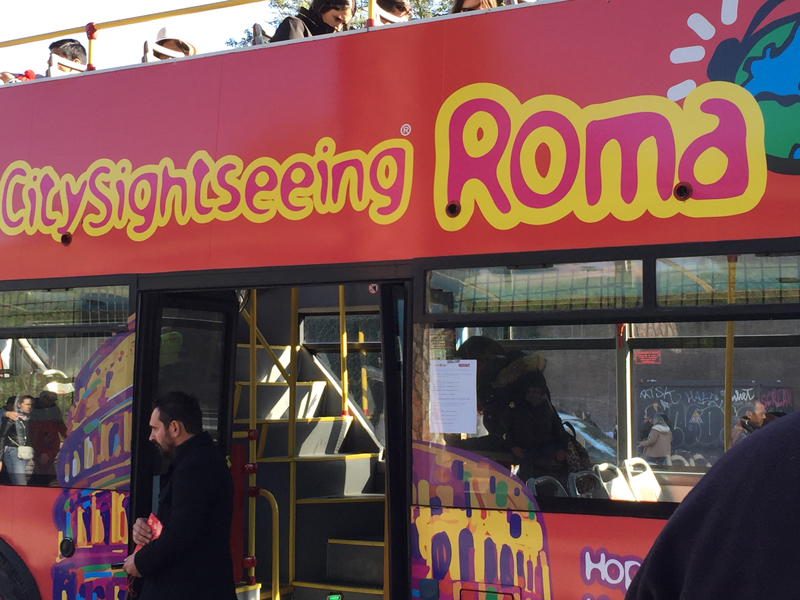 |
 |
| The site of the ancient Circus Maximus,
venue of chariot races and more gruesome mass entertainment. Situated
in the valley between the Aventine and Palatine hills, it was the first
and largest stadium in ancient Rome and its later Empire. After
the 6th century, the Circus fell into disuse and decay, and was
quarried for building materials. The lower levels, ever prone to
flooding, were gradually buried under waterlogged alluvial soil and
accumulated debris, so that the original track is now buried 6m beneath
the modern surface. |
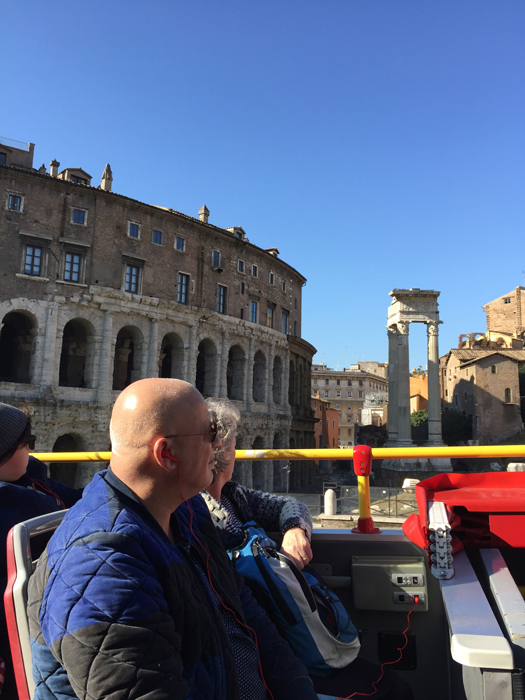 |
| View of the remains of the Temple of Apollo Sosianus. |
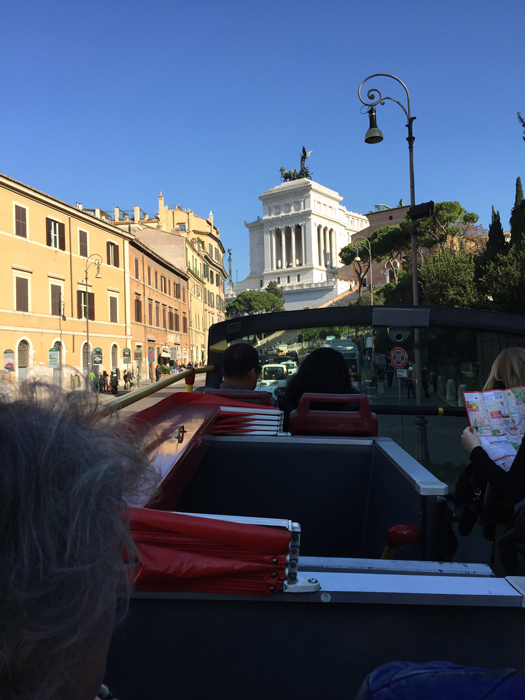 |
| Side view of the Vitorio Emanuelle II monument. |
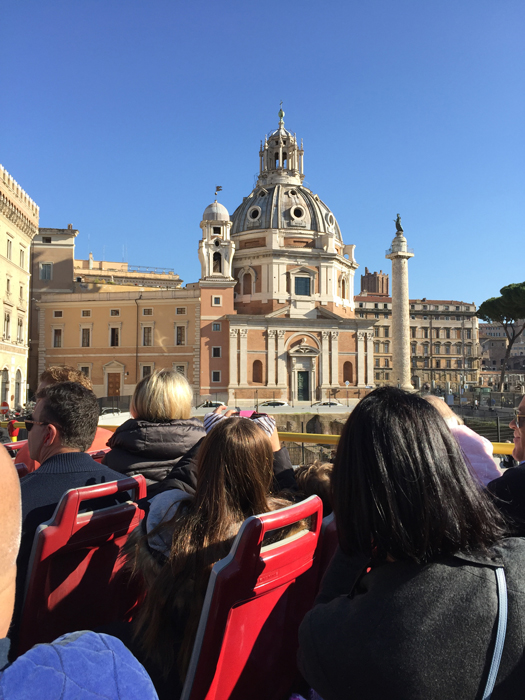 |
| Trajan's
forum. To the north the courtyard lies the Basilica Ulpia, an
imposing basilica named after Trajan's second name.
The magnificent Column of Trajan was erected at the center of the
courtyard to commemorate the victory of Trajan over the Dacians. |
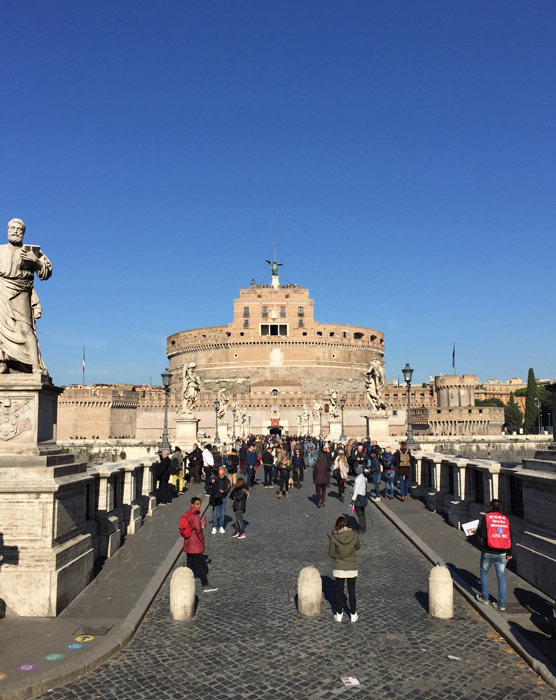 |
| The Ponte Sant'Angelo, leading to the Castello Sant'Angelo. The bridge is lined with marble statues of angels. |
 |
 |
| Palazzo
di Giustizia (Palace of Justice), seen from Ponte Umberto
I. It is the seat of the Supreme Court of Cassation
(Supreme Court of Appeals), and the Judicial Public Library. It fronts onto the Piazza dei Tribunali,
the Via Triboniano, the Piazza Cavour, and the Via Ulpiano. The huge
building is popularly called in Italian the Palazzaccio (the big bad
Palace). |
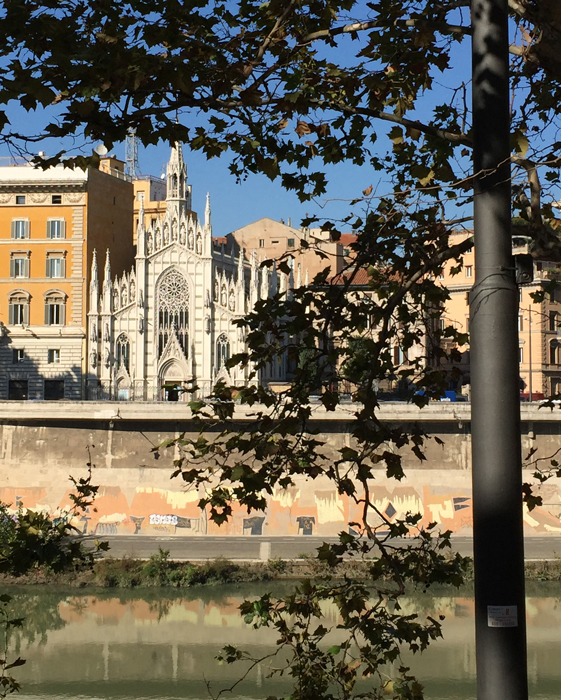 |
| The
Chiesa del Sacro Cuore di Ges¨ in Prati (Church of the Sacred Heart of
Jesus in Prati), also known as Chiesa del Sacro Cuore del Suffragio
(Church of the Sacred Heart of the Suffrage). |
Rome's 900 churches.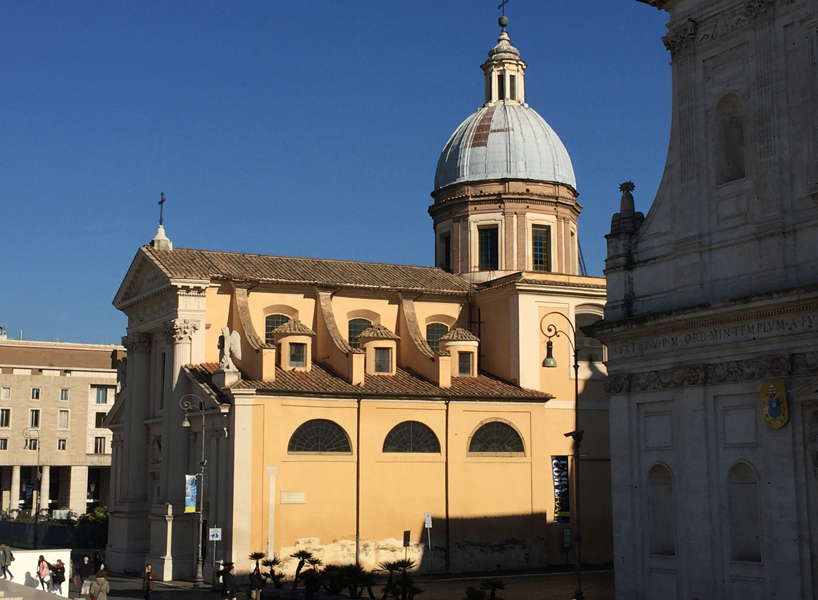 |
| One of Rome's 900 churches. |
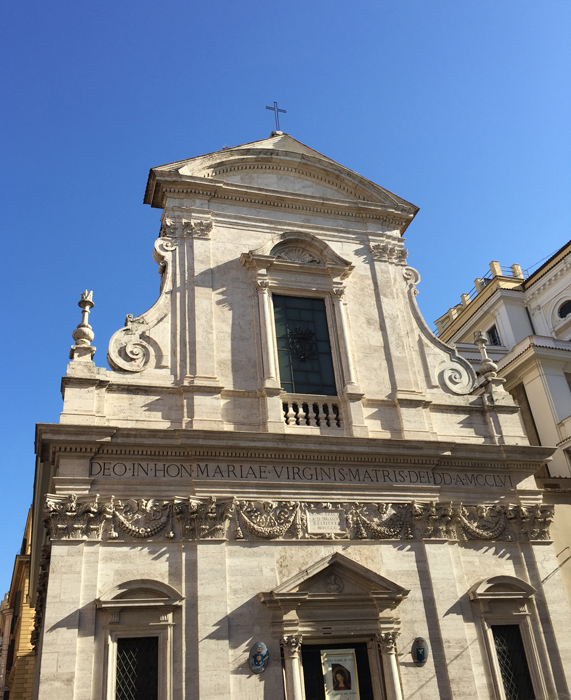 |
| The
facade of Santa Maria in Via was designed by Giacomo della Porta.
The church or a chapel existed in the 9th century, but was rebuilt
following reports of a miracle. On the night of 26 September
1256, the church well overflowed. A picture of Our Lady was floating on the
waters, which disappeared as soon as the picture was taken out. Pope
Alexander IV declared it a miracle, and ordered the construction of a
chapel on the site; in the chapel, the 'well of the miracle' still
exists. The church of S. Maria in Via now serves as a national church in Rome for the Ecuadorian community. |
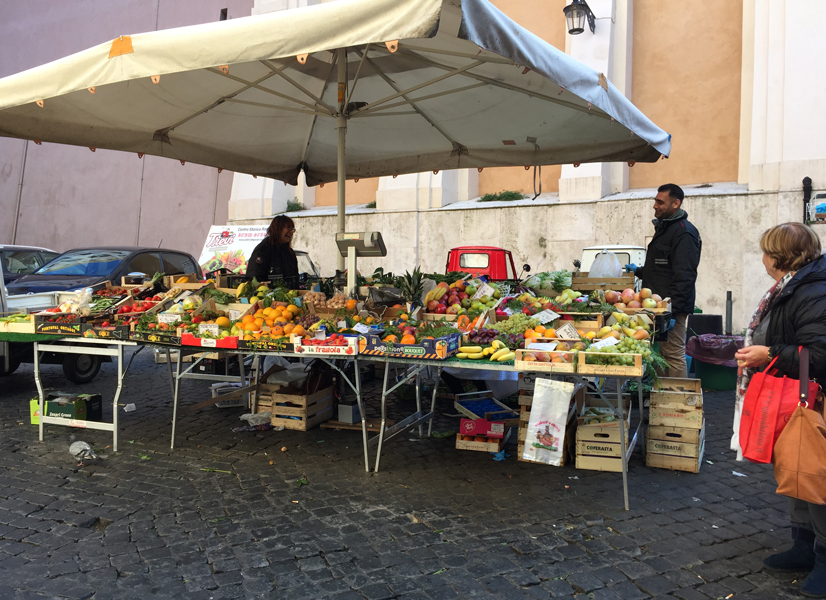 |
 |
 |

|
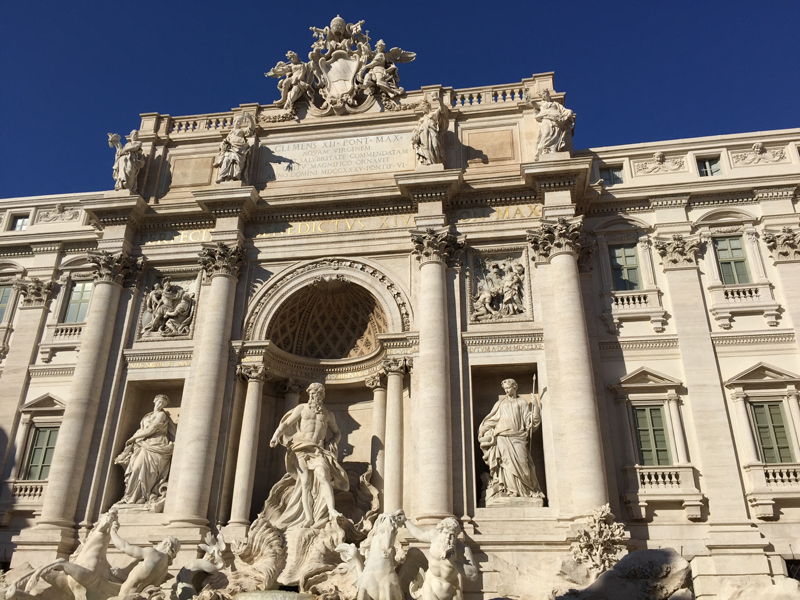 |
| The backdrop for Trevi Fountain is the Palazzo Poli. The papal coat of arms tops the facade. |
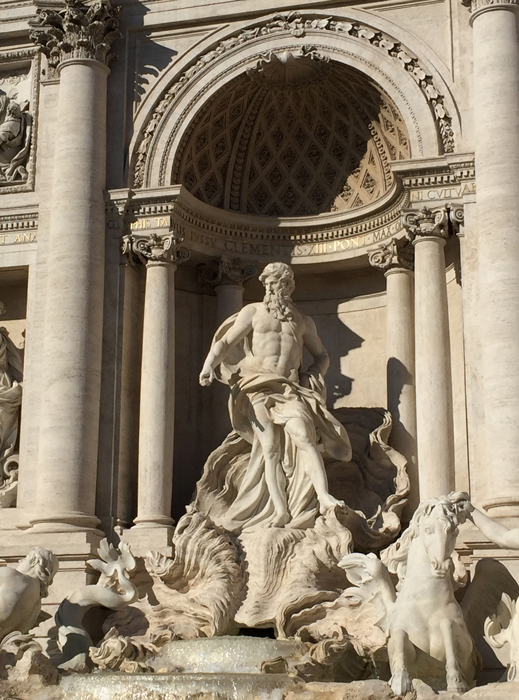 |
| Pietro Bracci's Oceanus (god of all water) was set in the central niche. |
 |
| Roasted Chestnut vendors dot the city. |
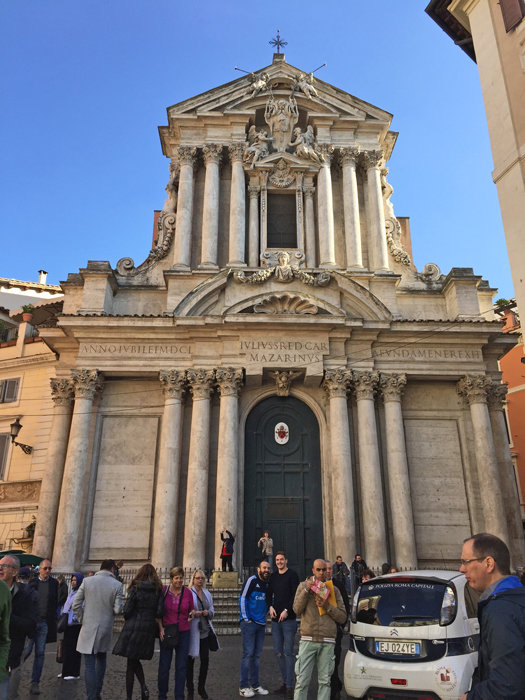 |
| Santi
Vincenzo e Anastasio a Trevi - Saints Vincent and Anastasius at Trevi -
is located
in close proximity to the Trevi Fountain and the Quirinal Palace, for
which it served as parish church. It is notable as the place
where the embalmed hearts of 25 popes from Sixtus V to Leo XIII are
preserved. It lies on the location of a medieval church,
mentioned in 962 in a document by Pope John XII as a branch of the San
Silvestro in Capite basilica, as well as in 15th century records. Known
as Santi Vincenzo e Anastasio since the 16th century, it was rebuilt in
the Baroque style and completed in 1650. Its dense massing of
Corinthian columns make a total of eighteen
fully free-standing columns, causing Roman wags to dub the
fašade "il canneto" - the canebrake. |
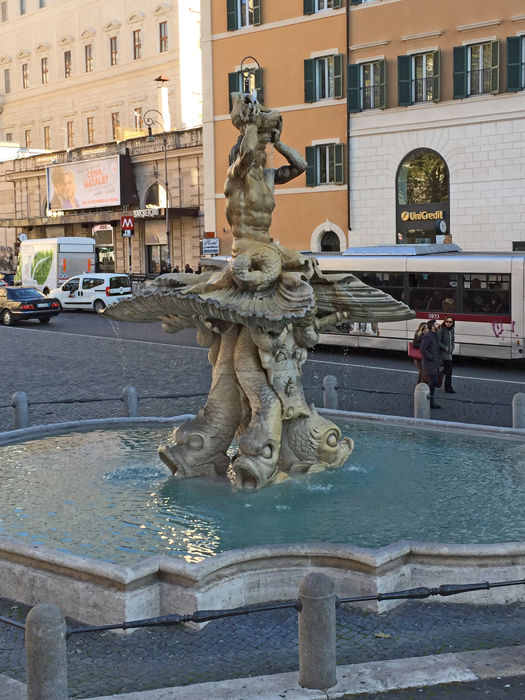 |
| The seventeenth-century Triton Fountain - Fontana del Tritone - by the Baroque sculptor Gian Lorenzo Bernini. |
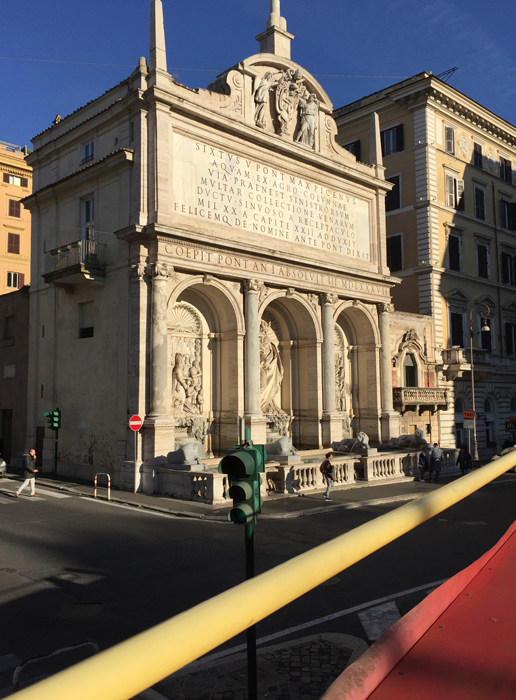 |
| The
Fountain of Moses was built in 1587-1588 by Domenico Fontana, who
designed a blind triumphal arch with three large niches. In the central
niche stands a large statue of Moses, flanked on either side by reliefs
depicting biblical scenes. The fountain was installed on request
of pope Sixtus V to mark the completion of the Acqua Felice, an ancient
aqueduct that had been restored in 1587 to provide the neighborhood
with fresh water. The fountain is officially named Fontana dell'Acqua
Felice, after the pope, whose real name was Felice Peretti. |
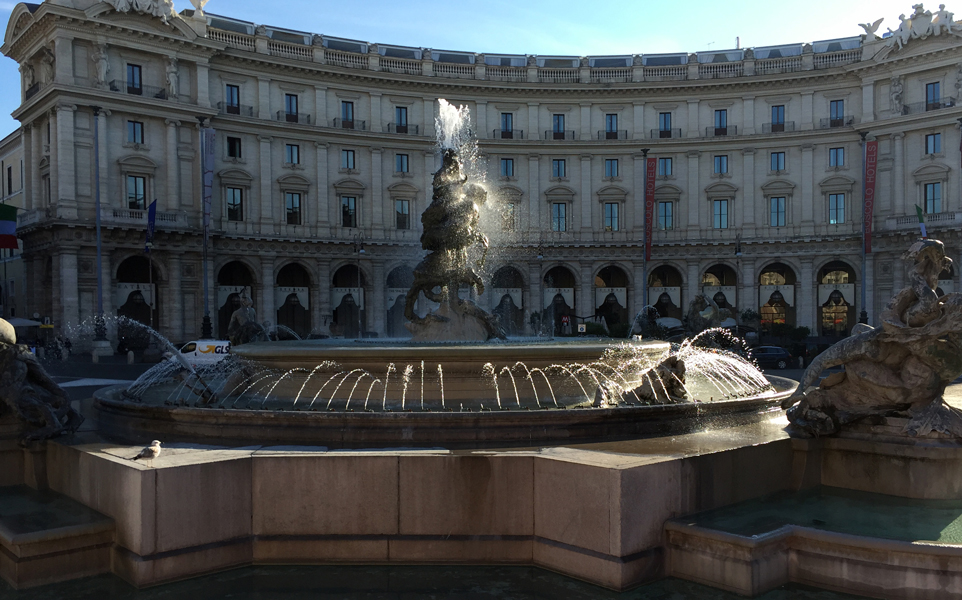 |
| The Fountain of the Naiads on Piazza della Repubblica. |
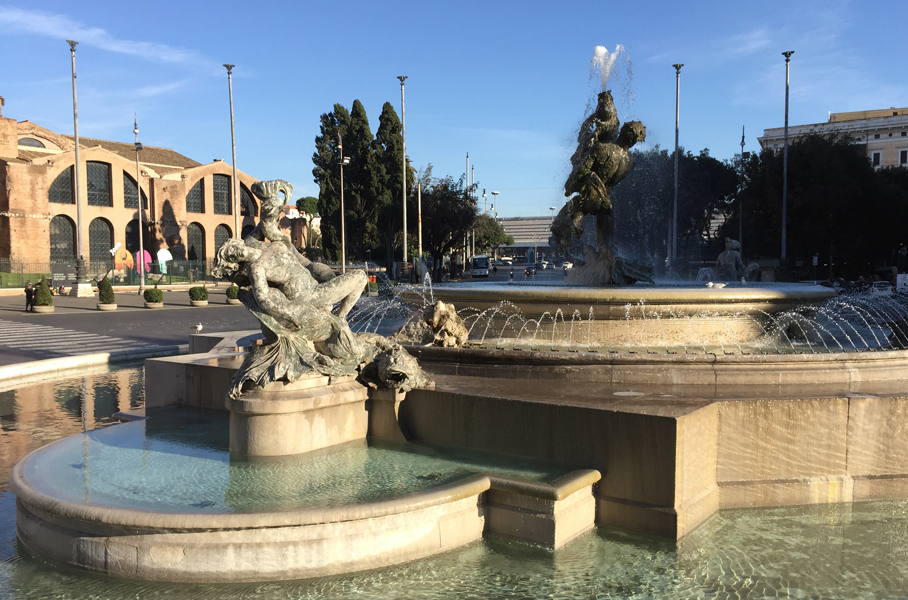 |
| The Fountain of the Naiads on Piazza della Repubblica. |
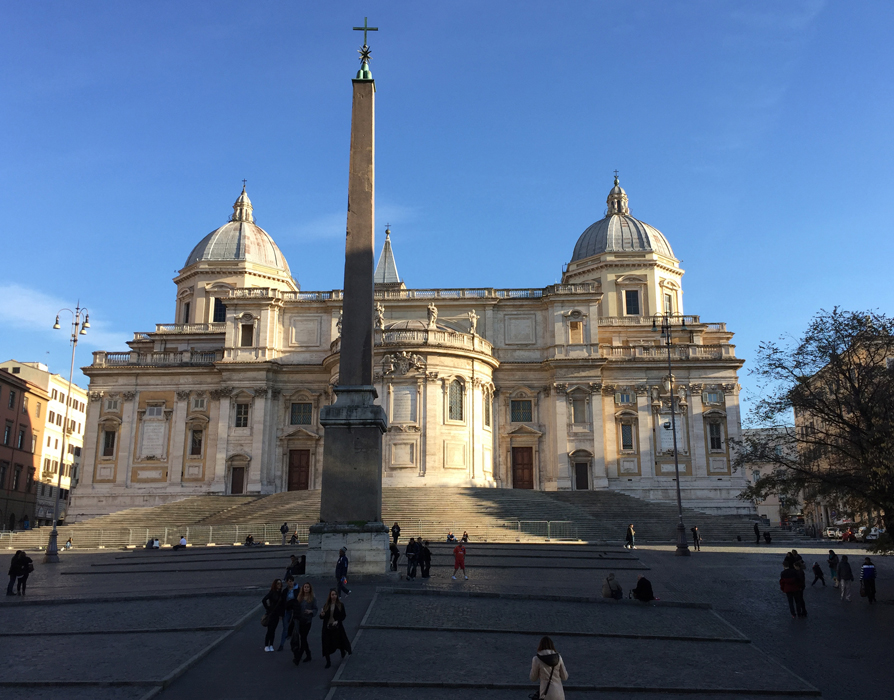 |
| Piazza dell'Esquilino with the apse of Santa Maria Maggiore.
The obelisk was first erected in Rome at the entrance to the Mausoleo di
Augusto. Augustus had visited the tomb of Alexander the Great in
Alexandria and he decided to build his family tomb using
some aspects of the tomb of Alexander. The obelisk eventually fell into pieces, and
as the area was often flooded it disappeared into the ground. In 1519
the opening of Via di Ripetta led to its discovery. The four pieces were placed near the church of S.
Rocco. Sixtus V (1585-90) had the obelisk repaired and placed (1587) at
the end of Strada Felice, a new street he had opened to reach S. Maria
Maggiore. The top of the obelisk is decorated with mountains and
the star of Sixtus V. |
 |
| Santa Maria Maggiore. |
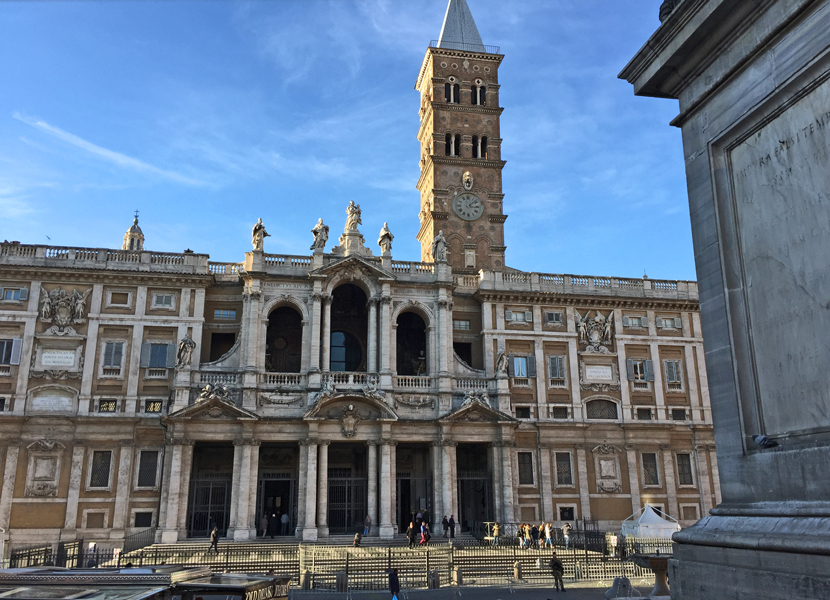
|
| The facade of Santa
Maria Maggiore, one of the first churches built in honour of the Virgin
Mary, and the largest, was erected in the immediate aftermath of the
Council of Ephesus of 431, which proclaimed Mary Mother of God. Pope
Sixtus III built it to commemorate this decision. The earliest
building on the site was the Liberian Basilica or Santa Maria
Liberiana, after Pope Liberius (352–366). |
Back to Italy 2016 Index
Colosseum
Rome - Around the City
Rome at Night
Vatican and St. Peter's